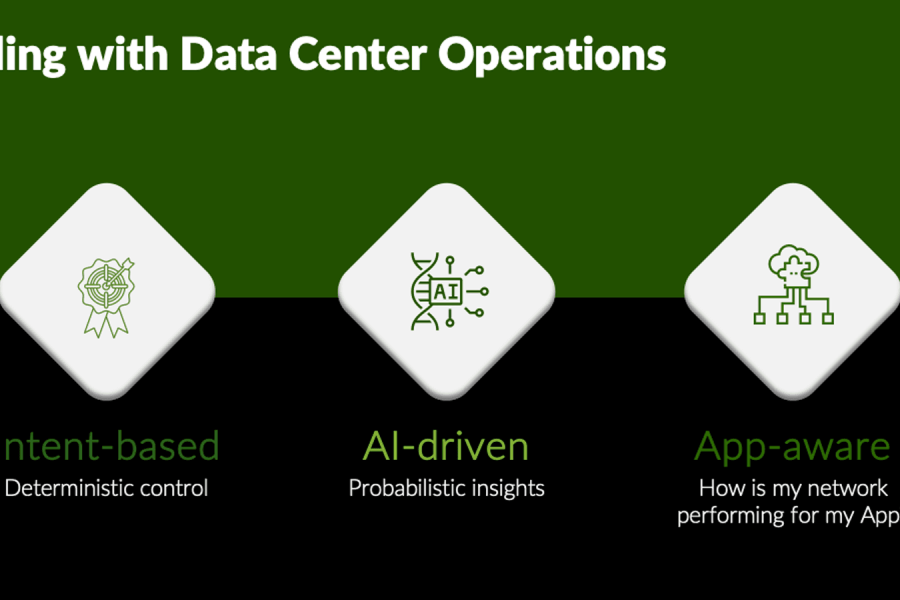When measuring the success of a network connection, the term throughput is commonly used to indicate whether the data and information being sent over has arrived correctly and in a timely fashion. Throughput is the rate at which data travels across the network from point A to point B. In the networking industry, it’s a useful piece of terminology that’s used by companies and vendors alike to highlight a critical factor in what makes a network or solution better than the competition’s. Everyone strives for better, faster throughput.
There’s another measurement term, however, that is often overlooked – and may do a better job of defining network connection success. That term is goodput.
What is Goodput?
Goodput is like throughput in that it measures the speed of data traversing the network from its starting point to its destination. What makes goodput different – and a better measurement – is that it measures useful data. Goodput measures how fast and accurately useful data travels the network and arrives at its desired location. It’s all in the name – goodput is data that’s good, not undesirable data such as retransmissions or overhead data.
Throughput includes bandwidth that’s wasted or taken up by retransmissions of data that wasn’t successfully transmitted in the first place. Retransmissions occur when networks are congested to the point where data is simply not getting through successfully. In addition, overhead data – the packet and frame headers that are included with application data – can eat up significant bandwidth. Overhead data is included when measuring throughput. So, throughput can be maximized without it truly being an accurate measure of network performance.
The common use of tunnels to get network traffic to its destination also contributes to bandwidth issues. Tunnels, when used for SD-WAN, are outdated, complicated, expensive and inefficient. Tunnels push all traffic in the same direction, along the same route and add a significant amount of overhead to the package. Overhead data that’s included in the throughput measurement mentioned above throws off indicators of network success even further.
That’s where AI-driven SD-WAN powered by Session Smart Routing technology from Juniper Networks comes in. Session Smart Routing makes dynamic routing possible, enabling the route the traffic takes to be changed instantly because there are no tunnels in use. Tunnels negatively impact goodput; because there is a size limit for tunnels, data is forced to “fit through” a tunnel. At the same time, because of the overhead, tunnels increase the size of the packets going over them, causing the packets to be split up and reassembled once they’ve left the tunnel.
In the 2021 Gartner Magic Quadrant for WAN Edge Infrastructure, Gartner mentions that “A Visionary has innovated in some key areas of WAN edge, SD-Branch, AI/ML, SASE, cloud connectivity, operational efficiency and cost reductions. Visionaries often help transform the market, from driving new ideas, including new business models, to solving enterprise challenges.”
Visibility is also key to understanding what traffic is traversing over the network, so the traffic can be prioritized and the best connection possible can be made. By eliminating tunnels from the equation and enabling traffic to be intelligently routed, the goodput of the network is increased, as congestion is lessened and the important ‘good’ data gets to its destination as planned. Juniper’s tunnel-free AI-driven SD-WAN provides the visibility and flexibility needed to make this possible.
That’s why goodput matters. In today’s modern enterprise, users care most about reliable access to their critical applications and data – everywhere and any time they need it. By just measuring throughput, the result will be an inaccurate view of network connection success. It’s whether that ‘good’ data gets through correctly and in a timely fashion that’s most important.
In short, strong goodput is possible. Juniper’s AI-driven SD-WAN solution doesn’t use tunnels and therefore consumes less bandwidth and suffers from less congestion. These days, successful networks are measured by the end-user’s experience with the network, i.e., whether the user was able to connect when they wanted to, download data at a high speed or have their Zoom calls run smoothly. A tunnel-free approach where less bandwidth is consumed across the network can only lead to better performance and better end-user experiences.
To learn more about AI-Driven SD-WAN, read the Gartner® Magic Quadrant™ for WAN Edge Infrastructure.
Related Content
Juniper Networks Named a Visionary in the 2021 Gartner Magic Quadrant for WAN Edge Infrastructure
Disclaimer
Gartner Magic Quadrant for WAN Edge Infrastructure, by Jon Forest, Andrew Lerner, Evan Zeng and Naresh Singh, [Publish Date September 20, 2021].
Gartner and Magic Quadrant are registered trademarks of Gartner, Inc. and/or its affiliates in the U.S. and internationally and is used herein with permission. All rights reserved
Gartner does not endorse any vendor, product or service depicted in its research publications, and does not advise technology users to select only those vendors with the highest ratings or other designation. Gartner research publications consist of the opinions of Gartner’s research organization and should not be construed as statements of fact. Gartner disclaims all warranties, expressed or implied, with respect to this research, including any warranties of merchantability or fitness for a particular purpose.


